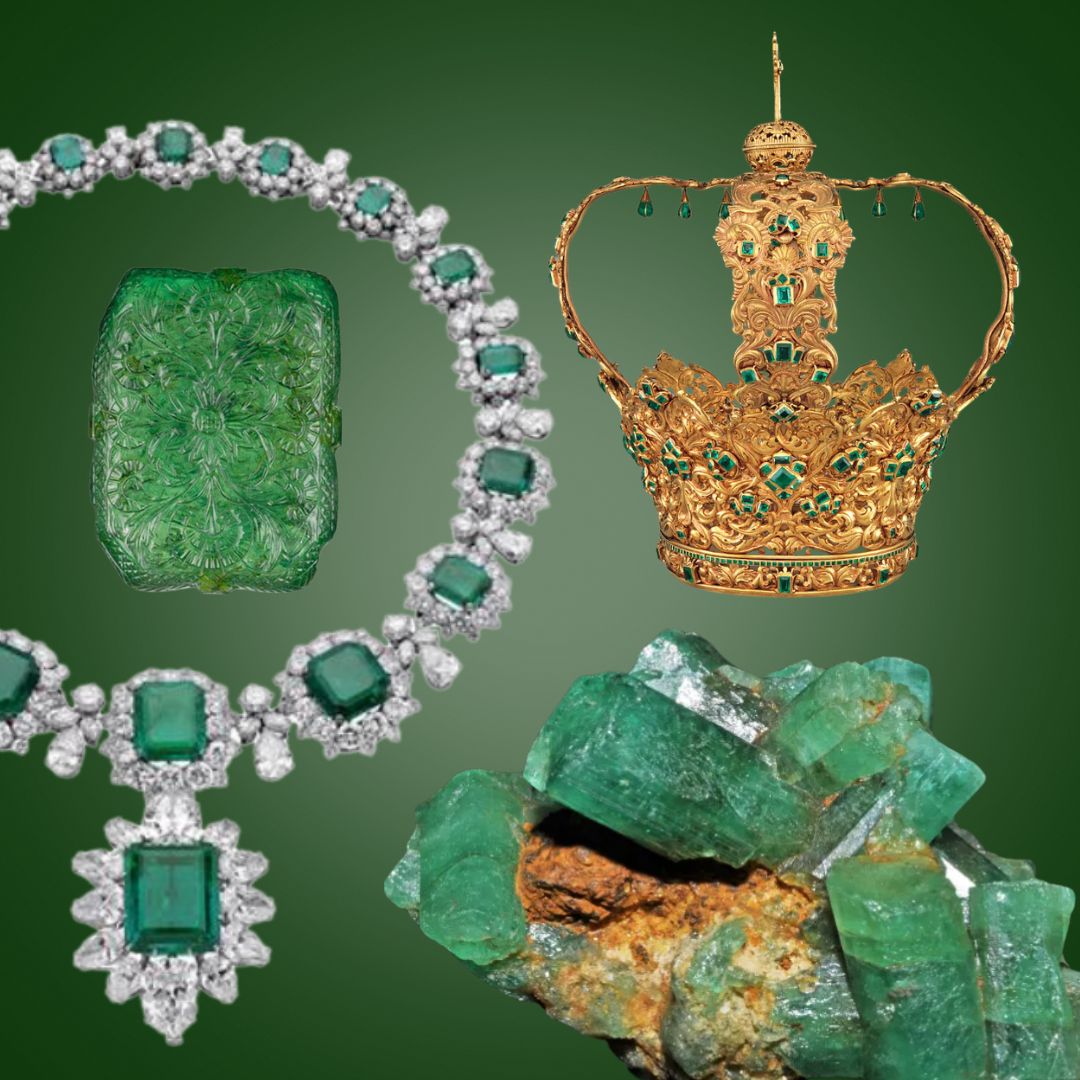As May’s birthstone, the emerald takes center stage this month—making it the perfect time to explore its rich history and enduring allure.
Emeralds have a long and fascinating history, going all the way back to Ancient Egypt. The first emerald mines date around 2000 BCE, and legend has it that Cleopatra was a serious fan likely because green was a sacred color associated with fertility and eternal life. Fast forward to the 20th century, Elizabeth Taylor, shared the same love for emeralds and became famous for her stunning jewelry collection. Over the centuries, these vibrant green gems have found their way into royal crowns, religious artifacts, and countless pieces of jewelry.
Elizabeth Taylor with part of her emerald collection.
Color
Emeralds belong to the beryl family of gemstones and form in cooled magma—as long as the right mix of elements is present, especially beryllium. In the case of emeralds, it’s the presence of chromium, vanadium, and iron that gives them their signature green color. Chromium and vanadium are what create that rich, intense green, while iron adds a bluish tint, giving each emerald its unique shade.

From Left to right you have Aquamarine (blue beryl), Emerald (rich green beryl), Bixbite (red beryl), Morganite (pink beryl), and Heliodor (yellow beryl). Not pictured Goshenite (colorless beryl).
Clarity
Type I gemstones usually form with great clarity and little to no inclusions—examples include aquamarines, heliodor, and morganite. Most gemstones, though, fall into the Type II category, which means they typically have some visible inclusions. Rubies, sapphires, and quartz all land in this group. Then there are Type III gems, which almost always show inclusions—this is where emeralds and most tourmalines belong. As emeralds form, tiny amounts of minerals, liquids, or gases can get trapped inside, creating inclusions of all shapes and sizes. These internal features are often referred to as jardin—French for "garden"—because they can resemble plant-like patterns within the crystal. To enhance clarity, most emeralds are treated with oil, a common and accepted practice in the gem world.

Emerald Care
To keep your emeralds looking their best, it’s important to clean them gently. Avoid soaking them in water, using harsh cleaning solutions, or putting them in an ultrasonic cleaner—these actions could cause the oil to reseed showing more inclusions. Instead, stick with mild soap, a soft-bristled toothbrush, and a light touch to remove any surface buildup. Rinse with cool water and make sure to dry your jewelry completely.
In general, things like aerosols, lotions, and perfume can affect gemstones over time. A good rule of thumb? Make your jewelry the last thing you put on and the first thing you take off.

Here are my five favorite (famous) emeralds.
- Cartier's Art Deco Emerald, Diamond and Enamel Brooch, 1927
- The Stotesbury Emerald, Cartier design set in platinum, 1912
- The Angouleme Emerald Tiara by Court jeweler Maison Bapst,1819
- The Crown of the Andes, 1660-1770
- The Mogul Empire Emerald, 217.80 carat emerald with intricate Islamic inscriptions and floral carvings, 1695
Emeralds have enchanted people for thousands of years, from ancient royalty to modern collectors. Their vibrant green hues, rich symbolism, and unique inclusions make them endlessly fascinating. Whether you're learning about them for the first time or deepening an existing love, emeralds are a beautiful reminder of nature’s ability to create something truly extraordinary. If you’re interested in creating a custom emerald piece that’s uniquely yours, feel free to explore my custom jewelry section on my website here.


Leave a comment